Sussex architecture
Celebrate 60 years of Sussex by exploring our campus architecture.
Arts A pillars
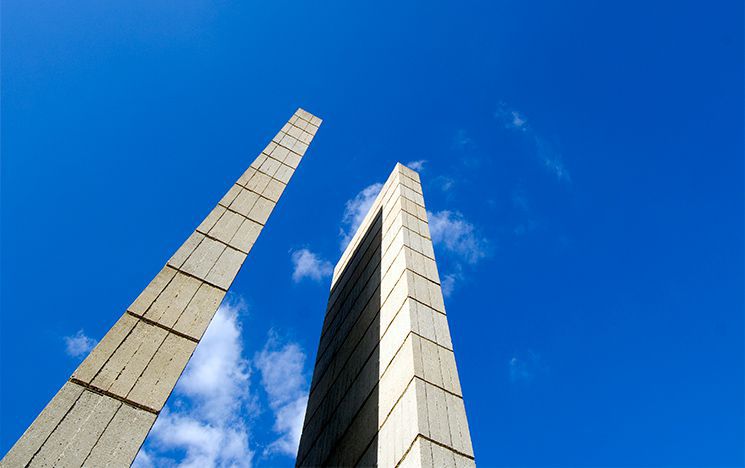
The two towers of concrete blocks at the entrance to the Arts A lecture theatres are considered deeply symbolic, but of what?
Sir Basil Spence, who created them, interpreted them as representing “the infinity of learning” as they stretch into the sky. Others see them as a tuning fork to maintain harmony on campus, or, more prosaically, rugby posts.
They would also have looked like the antennae of a butterfly if Spence’s original plan to create lecture theatres with cantilevered wings hadn’t proved too costly to attempt.
Another suggestion is that they were created from leftover materials originally intended to be used to build a swimming pool – until it was decided that students had a vast ocean on their doorstep for sea bathing.
Mandela Hall
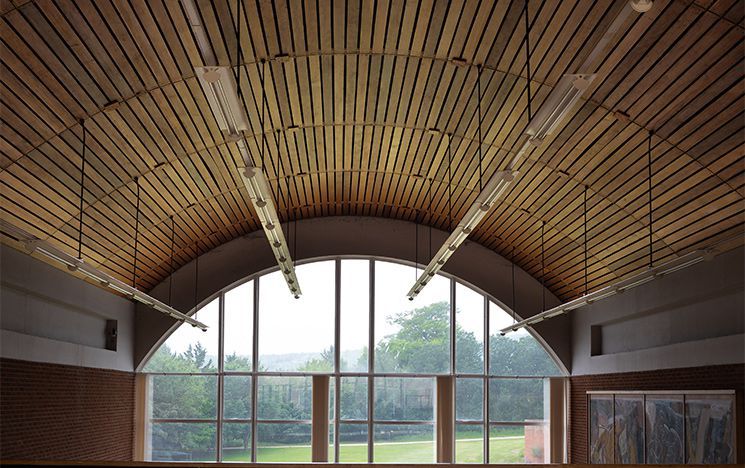
Originally called ‘the refectory’ on account of its provision of meals and beverages, the large hall in Falmer House was renamed Mandela Hall in 1978 in honour of Nelson Mandela – the imprisoned leader of the African National Congress who was finally freed in 1990.
The renaming, agreed by Council, was supported by the University of Sussex Students’ Union, who had been campaigning against apartheid since the 1960s. The SU initiated the setting up of the Mandela Scholarship at Sussex in 1973.
The scholarship, which supports two South African post-graduate students to study at Sussex, has been going strong ever since. On his release from prison, Mandela wrote to the scholarship fund, stating: “the power of education extends beyond the development of skills we need for economic success. It can contribute to nation-building and reconciliation.”
Eye of the Meeting House
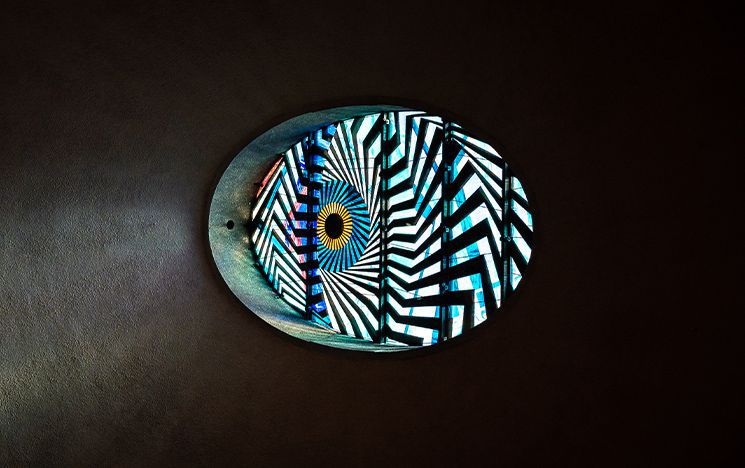
From the 460 multi-coloured glass panels, to the magnificent organ, there are many delights in the University’s Grade II* listed Meeting House. But look up and you see a rather special gem.
The 'eye’ rooflight was designed by Sir Basil Spence's son-in-law and business partner, Anthony Blee, and made in coloured glass and black epoxy resin. It’s positioned at an angle in the conical roof of the building so that the light shines directly onto the altar.
In 2018, a leak caused the eye to ‘weep’ whenever it rained. While waiting for specialist repairs, plastic buckets echoing the colours of the coloured glass panes were dotted around the floor to catch the drips. Floating candles added to the atmosphere.
Flint wall of Falmer House
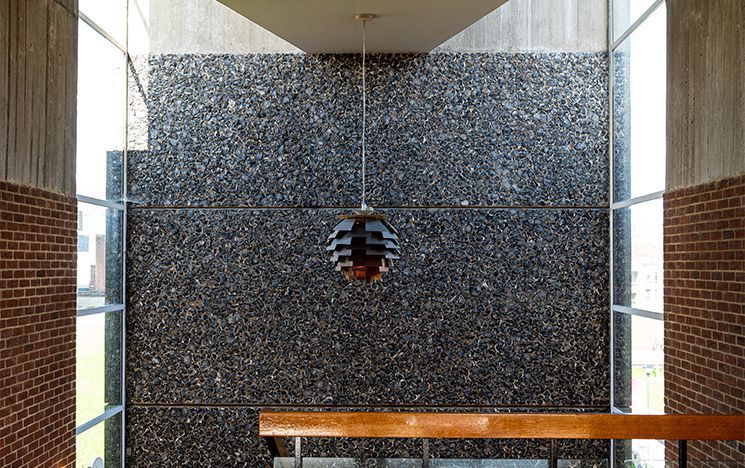
Flint, found across the Sussex landscape, is synonymous with the University. Sir Basil Spence incorporated it into the design of Falmer House, the University’s first building, constructed in 1961.
Now a Grade I listed building, it was described in the first edition of Ian Nairn and Nikolaus Pevsner’s Sussex The Buildings of England, published in 1965, “….as exciting in the extreme, in fact so high in its emotional pitch that one may be left in doubt whether the social life in the buildings will live up to so exciting a visual setting”. Of course, it did!
Originally a teaching and dining space, it’s been the scene of student protests and celebrations, and has hosted legends of the rock world, such as Jimi Hendrix and The Clash, as well as the Queen, who dined there in 1964.
Arts A steps
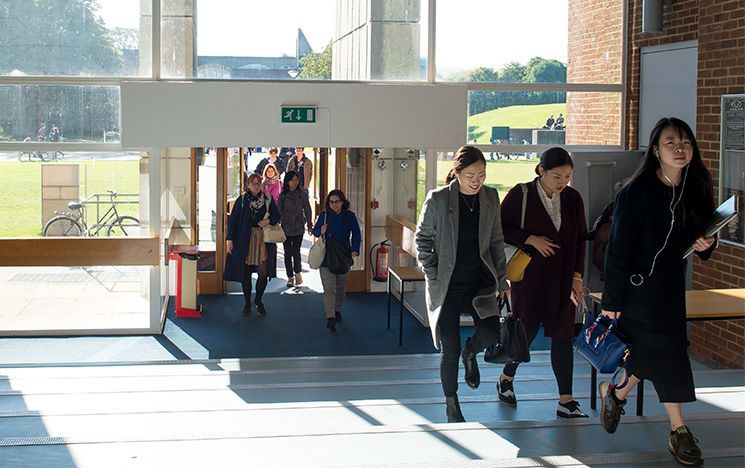
They look so simple to negotiate, but it takes persistence to find a rhythm to ascend or descend the wide blue steps that run between the Arts A lecture theatres (known as the Asa Briggs Lecture Theatres in honour of the former Vice-Chancellor of Sussex and renowned historian).
Campus architect Sir Basil Spence was a master at making us look again at our environment to reveal the unexpected. His steps are no exception.
East Slope amphitheatre
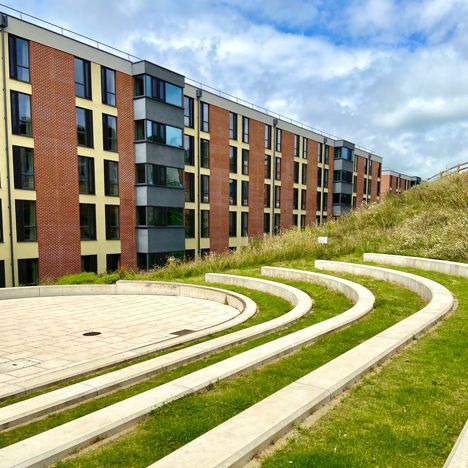
An outdoor amphitheatre was one of the new additions when East Slope was redeveloped in 2017, replacing the warren-like student rooms of the 1970s.
While their replacements bring comfortable and modern accommodation for current students, old East Slopers remember the original student digs with great fondness and nostalgia; for the parties, the wildlife (including visiting badgers) and the sense of camaraderie in what eventually became “the grottiest accommodation on campus”.
Solar panels
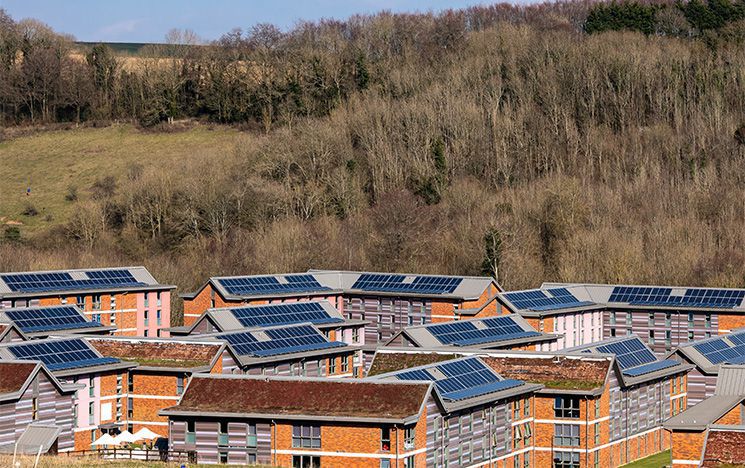
More than 3,000 solar panels were fitted at the University in 2017, and switched on by Caroline Lucas, MP for Brighton Pavilion.
The solar project is the largest of its kind in UK higher education and is a key step in the University’s ambitious journey to become one of the most sustainable universities in the country.
Caroline Lucas said, “Universities are more than just a group of buildings. They are places of innovation and aspiration and have to inspire people into believing they can make a difference. This initiative is hugely welcome and needs to be as bold as possible.”
The panels provide over three quarters of a million kilowatt hours of electricity per year to the campus. That’s enough to power the Library for a year!
Memorial pathway
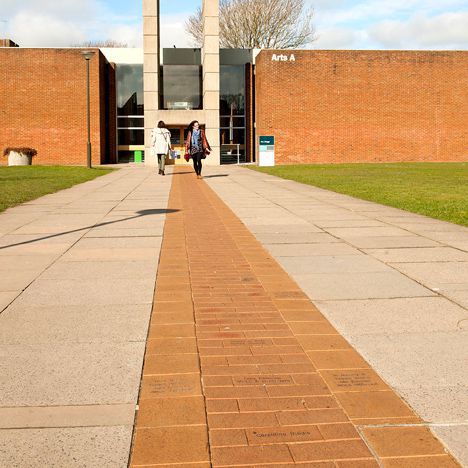
The path from Library Square to the Arts A building on campus is well trodden. Every Sussex student, past and present, will have walked this way at some point.
We have transformed this familiar route into a memorial for students and staff – to thank someone who has helped them on the way, or to remember someone special.
The proceeds from each engraved paver go directly to the Sussex Fund, which supports the well-being and happiness of our students through awarding scholarships and enabling opportunities that students might not have had otherwise.
Concrete Sussex sign
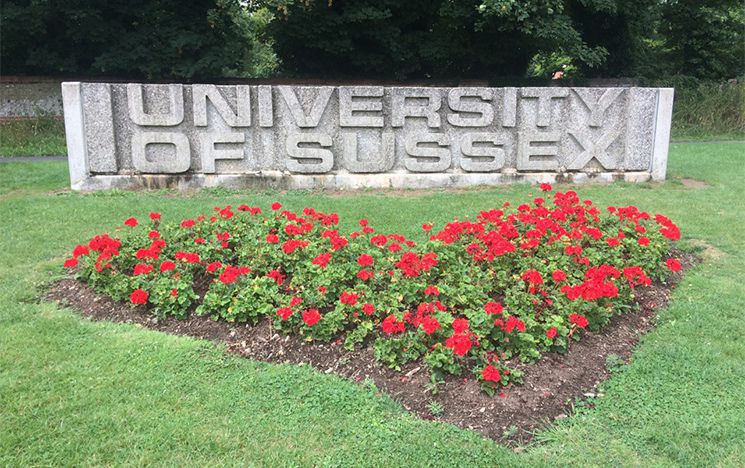
On it, next to it, in front of it, draped all over it… there are myriad ways that Sussex students and visitors find to pose with our University of Sussex concrete sign.
In fact, there are two of them. One is on the approach to campus from Stony Mere Road. The other is at the A27 entrance to campus, with a heart-shaped flower bed in front.
They both arrived on campus around 1965 to flank the ‘new’ underpass from Falmer Station and were moved in 2010 to their current locations when the underpass was redeveloped.
Observatory
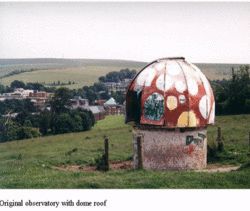
A small, circular, brick structure is all that remains of what was once Sussex’s own observatory. While astronomy has thrived at Sussex since its introduction in 1965, the campus telescope behind Park Village was abandoned in 1988 after a series of thefts. When it still had a roof, it was also creatively reimagined as a ‘magic mushroom’.
Other, safer, locations were subsequently used for telescopes, both on and off campus, and our astronomers continue to be involved in major international projects, including the James Webb Telescope.